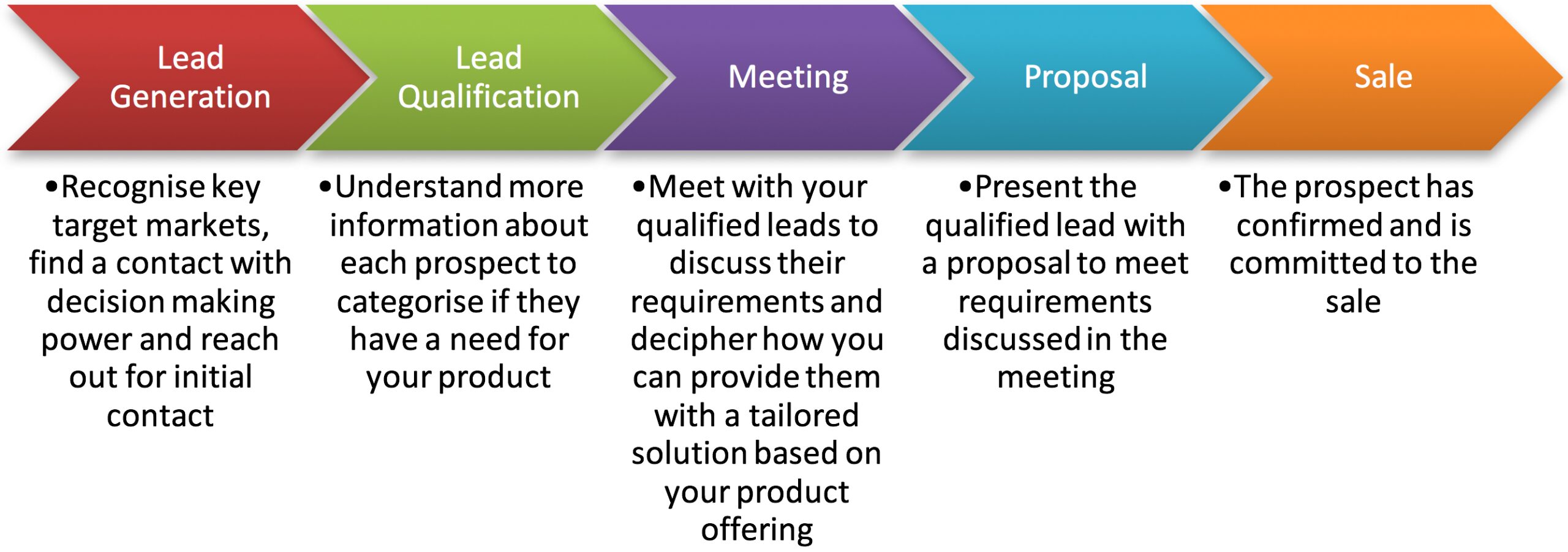Does your business have a growing sales pipeline? Or is it just another pipe dream you’ve been meaning to realise but find you’re too busy with the day-to-day running of your business?
Well, you’re not alone.
Most businesses track sales pipelines, and yet few think they’re managing theirs well. In fact, recent research conducted by the Sales Management Association found 63 percent of business owners, large and small, thought their business was ineffective at managing their sales pipeline overall.
So why is this such tricky business for businesses – no matter their size? It seems the problem lies in spending effort in the wrong places when it comes to building, and managing effective pipe and turning this into closed sales in a suitable timeframe.
And it’s worth putting your efforts where it counts for maximum results. Developing a robust sales pipeline gives you:
- Insight into the total value of “active” new and repeat business opportunities
- Business data to intelligently predict the value of leads likely to convert to sales – helping you match your inventory purchasing with your expected demand
- Productivity tools to ensure your sales team focus on the deals that are most likely to close – helping your team reach their targets!
- Increased accuracy around revenue forecasting you expect to secure in a given month, quarter or year – helping you manage your cash flow
To make the effort you put into managing your sales pipeline count, we’ve come up with this handy roadmap to get you and your pipeline where you want to go.
Check out our five steps to building and implementing a healthy and growing sales pipeline.
Before anything else: get to know your customer.


With a well-managed CRM and processes that your sales team are consistently following the next questions to ask when developing a healthy sales pipeline is “Who are our customers? What makes them tick? What are they buying, how so and how frequently? And how can we serve our customers better?”. Knowing your current customers and their engagement with your product and brand across the sales lifecycle can give you some valuable insights into what you should expect your pipeline to look like.
Step 1: Design your pipeline
Think of your sales pipeline as the visualisation of your sales processes to create an efficient system to progress leads throughout your sales cycle until you have converted them into happy customers; also as mentioned above, it provides a formula to estimate sales revenue so you can get a clear picture of what’s ahead – allowing you to better manage your inventory, your cash flow and your workforce.
This is important because developing and effectively managing a sales pipeline gives your sales team an opportunity to follow your proven sales processes and ensure they continue to match your customer’s buying cycle to maximise conversion rates. Each step within a sales pipeline represents a pre-determined set of actions that need to be taken into account to progress the lead to the next stage.
Define your sales process clearly
The study found that sales teams that were the most effective at managing their pipelines had invested the time to define standardised and repeatable sales processes. More specifically, they had sales processes with clearly defined stages that were well understood and followed by their salespeople. There was no guesswork when it came to which stage a particular deal belonged in, and everyone believed and trusted the data in the CRM tool. In short, there was a strong foundation for effective pipeline management—a solid sales process with clearly defined stages.
Usually, it’s recommended that a sales pipeline consists of five to six stages, for an efficient yet effective process. Below is an example of a horizontal sales pipeline, which shows how sales are successfully made.
The diagram shows leads brought in at one end of the pipeline, and then actively moved through the various stages of the sales process. At every stage, your salespeople are applying their skills to move that sale further along the pipeline.
Why does this work? The sales process is normally progressed due to the successful sales methods of proven sales reps, so that lesser experienced and even novice salespeople can follow in their footsteps by repeating a formula that works for your business. A sales process also makes sales management far more effective, because everyone involved is “on the same page”.


Step 2: Understand your business numbers
The sales pipeline doesn’t just manage the flow of business leads; it can assist sales managers and business owners in understanding the current value of sales conversations and their expected billing date – assisting company revenue forecasting, inventory purchasing and cash flow management.
It pays to invest in managing the sales pipeline
With a solid sales process in place, the next step is focusing your front-line sales force on managing the sales pipeline to maximise your conversions. Businesses in the survey that spent at least four hours per month managing each rep’s sales pipeline gained 14 percent greater revenue growth than those that spent less than one hour per month.
Unfortunately, many sales teams believe they spend a lot of time managing their sales pipelines, when in reality they are spending a lot of time creating forecasts. Here’s a simple distinction between the two activities:
- If you are spending your time discussing close dates, probabilities, and deal sizes, then you are forecasting.
- If you are spending your time discussing the overall health of your sellers’ pipelines and how they can shepherd more deals to successful closure, then you are managing your pipeline in a productive way, and you’ll likely see improved sales performance.
To understand the genuine value of opportunities within the sales pipeline, key business data from all areas of the business will need to be considered, including information from finance, sales, marketing, customer service and stock availability. Your Customer Relationship Management (CRM) database should help you gain a 360 degree view of what is happening across the business that may impact on your sales pipeline.
The five key figures to calculate for your sales pipeline:
- Number of leads and prospects within each stage of the pipeline
- Average value of prospects in pipeline and expected close date
- Conversion rate – percentage of leads and prospects likely to progress to the next stage (Leads: Sales, Leads: Prospects, Prospects: Sales)
- Age of the lead at each stage of the pipeline
- The overall value of opportunities in the pipeline
Understanding your pipeline statistics provides a data-driven approach for your sales team to reach sales targets. The more data-driven your approach, the more ‘realistic’ the result and expectation.
For example:
To reach a monthly sales target of $100,000, when the average value of a sale is valued at $20,000 – the sales person needs to close five opportunities within the month to hit the target. If only 10% of leads during the very first stage of the sales pipeline make it through to the last stage, the sales person will need to speak to 50 prospects, or have a current value of over $1,000,000 leads within the pipeline to secure their required five new customers in order to reach budget. Now imagine, if you can give your sales reps access to their pipeline data so that they can focus their efforts on those opportunities that are at the final stage of the sales process. The probability of hitting their target is likely to increase just by getting them focus.
Step 3: Recognise your risks


Knowing your risks is important and may include issues around lack of product information, lead times for new orders not matching customer expectations and inflexible pricing structures for important repeat customers or those buying in bulk. By understanding, or at least being aware of these risks you can put strategies in place to assist in helping your sales reps progress more leads to opportunities and opportunities to customers and mitigate the chances of losing valuable business opportunities or leaving deals on the table.
A key indicator to be mindful of is the length of time a lead sits within one stage, without progressing to the next stage. This waiting period can decrease the possibility of a sale/conversion; which is a risk to the estimated revenue of the business and wasted effort by the sales team. It can also lead to a miscalculation in your stock purchasing and workforce capacity planning. Understanding the average timeframe for a lead to pass through each stage of the sales process provides the company insight into when they can expect revenue to drop-in and allows the business to forecast accordingly.
Similarly, a lead is considered risky, and therefore less likely to convert, if they do not follow the natural progression of the pipeline. The sales pipeline considers the standard buyer’s journey, including the value proposition education process, before they decide to buy. For example, sharing a proposal before a face-to-face meeting can lead to a client not understanding the true value of your product or service and view the cost as over-priced and over-valued. Often these discussions lead to dreaded discounting conversations!
By understanding the business risks that appear in the sales pipeline, you empower your team to recognise how to demonstrate value at each stage of the buyer’s journey and reach out for additional support and resources on how to nurture to keep your leads progressing.
Step 4: Review and monitor your pipeline
Now that your pipeline is set up, regular reviews of the pipeline will highlight any inefficient processes, aged opportunities or leads that are considered ‘high risk’ due to their size or lack of progression through the sales process.
It is vital that each stage of your pipeline is monitored separately, alongside its corresponding sales process. If one section of the pipeline is experiencing a higher than normal drop-off or stalling rate, review the current processes and update as required. If you can improve your conversions at each stage you will soon see an increase in your overall sales result.
Sales managers can benefit from training in pipeline management strategies and techniques.
The research showed that 61 percent of business owners admit their sales managers have not been adequately trained to manage their sales pipelines. Also, sales teams that claim to have adequately trained their sales managers in pipeline management strategies and techniques reported an impressive 23% greater revenue growth than those that didn’t. What would a 23% increase in revenue growth mean for your business?
The lessons from various research sources are very clear: Most sales forces are not good at managing their sales pipelines and are therefore likely to be leaving deals on the table. The handful that do manage their pipelines effectively share certain key approaches:
- They define solid sales processes that are actionable and credible
- They set aside time to actively manage their sales pipelines (not just forecast revenue)
- They train their sales managers how to manage their sales pipelines
But it should not just be left up to your sales managers. Empower your sales reps to manage their own pipeline lines and daily, weekly and monthly activities to ensure you are consistently achieving your sales targets. A good CRM will allow your reps to track their activities (phone calls, emails, meetings and follow-ups) providing reminders of the activities that have to do once they get into the office each day. The benefit of a cloud-based system is they no longer need to even come back into the office. They can log in when they are at home or on the road and be prompted by all the follow up they need to do to make sure they are closing out those deals. By understanding their sales pipeline they will be able to focus their efforts on those deals that are most likely to close plus nurture leads and opportunities effectively depending on what stage of the journey they are at.
Step 5: Integrate your business data and how the cloud can help


Knowing your sales cycles and the various stages you need to progress to convert customers to buy your product is important to ensure you consistently hit your growth targets.
Cloud-based business management software will integrate and automate key areas of the sales pipeline to save time and resources. Enterprise Resource Management (ERP) systems integrate business data from all corners of your inventory carrying business including financials, sales and marketing, CRM and supply chain management. Gaining transparency on real-time customer data allows you to match your purchasing of stock with your expected demand. Plus, having a unified solution with your financials will also ensure you get those invoices out to customers as soon as possible helping you to get paid faster.
To close the business loop, use data collected from your sales pipeline in conjunction with your sales transactions historical data to recognise trends which will empower you to create accurate data-driven sales and revenue targets for your company and individual sales team members.
Your software should then allow your sales team to easily manage and report on their progress towards your business sales targets and address any issues that arise in real-time.
There you have it, our five steps to building a healthy sales pipeline into your business to ensure your sales goals are no pipe dream. To prepare your business for success; understand your sales processes, calculate your business numbers, recognise your risks, monitor and review, and lastly, encourage an integrated sales approach across your business.
Get in touch to start a conversation on how JCurve ERP’s integrated solution can help you create an effective end-to-end sales pipeline.









